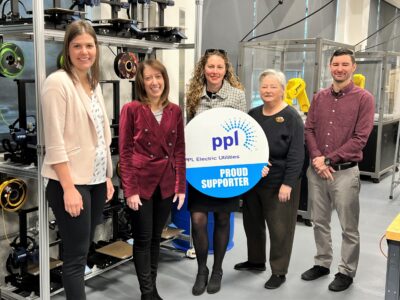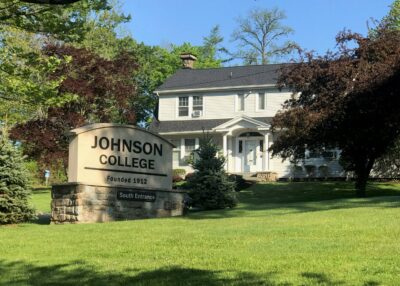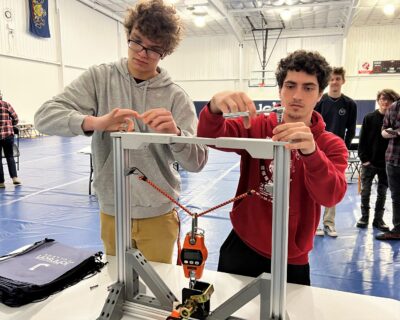Johnson College has received a $65,000 PPL Foundation Major Grant. These funds will support a new STEM Learning Labs after-school program for economically-disadvantaged students from diverse backgrounds.
Throughout the program, students will use hands-on learning and activities to discover and explore potential careers in STEM fields. In a supportive environment that will encourage creativity and lifelong learning, students will work with technology such as Lego Mindstorms, Kinex, robotic arms, 3-D printing, electric circuits, and Ozobot robotic computer programming.
The program is designed for seventh and eighth-grade students from Lackawanna County school districts including Nativity Miguel, Old Forge, Riverside, and Scranton. During this five-week program, students will meet after school three times per week for four weeks at their home school. During the fifth week, students will attend programming at Johnson College for additional hands-on experience with more advanced equipment.
The PPL Foundation’s Major Grant program makes annual awards through a competitive application and review process.
This year, the PPL Foundation received more than 100 applications during this highly competitive grant cycle. Johnson College was one of 17 organizations to be selected for an award.
“We are continuously inspired by the caring, commitment and creativity of the many nonprofit organizations such as Johnson College who make a lasting difference in our communities, and this year’s grant recipients are no exception. We’re proud to support their efforts,” said Ryan Hill, PPL Foundation president.
For more information about the program, contact Tim Frank, Johnson College Associate Director of Community Engagement, at tfrank@johnson.edu or at (570) 702-8963.
About the PPL Foundation
Through strategic partnerships, the PPL Foundation supports nonprofit organizations that are engaged in innovative and groundbreaking work to create vibrant, sustainable communities; advance diversity, equity and inclusion; and support children’s success from cradle to career. The PPL Foundation contributes more than $3 million annually to a wide variety of nonprofit organizations in eastern and central Pennsylvania. To learn more, visit pplcares.com.
Pictured left to right: Dr. Kellyn Williams, Associate Vice President of Special Programs, Johnson College; Dr. Katie Leonard, President & CEO, Johnson College; Alana Roberts, Regional Affairs Director, PPL Electric Utilities; Karen Baker, Senior Director of College Advancement, Johnson College; and Tim Frank, Associate Director of Community Engagement, Johnson College.









